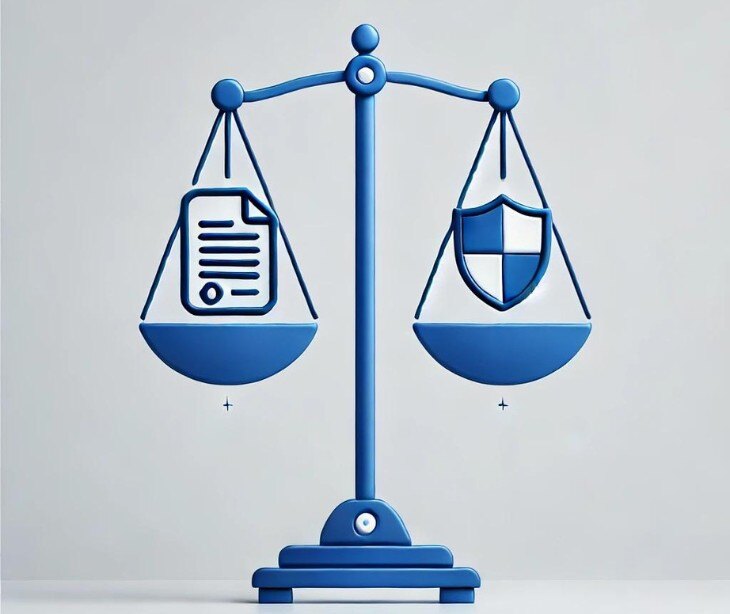
The healthcare industry is no stranger to administrative burdens, with 61% of healthcare professionals citing it as a top contributor to burnout. One of the challenges facing healthcare organizations today is effective regulatory compliance management. For compliance officers, keeping up with this relentless tide of change has become an almost impossible challenge.
The rapid pace of regulatory change
The healthcare industry is subject to an array of regulatory requirements, with close to 630 distinct rules spanning nine domains. These regulations are constantly changing, with changes occurring as needed and often accompanied by routine surveys and additional costs. Over the last six months, there have been more than 20 updates to healthcare regulations.
It is estimated that healthcare organizations spend $39 billion annually on non-clinical regulatory requirements alone.
According to a review of federal law and regulations by the AHA and Manatt Health, "The frequency and pace with which regulations change often results in the duplication of efforts and substantial amounts of clinician time away from patient care. As new or updated regulations are issued, a provider must quickly mobilize clinical and non-clinical resources to decipher the regulations and then redesign, test, implement and communicate new processes throughout the organization."
The limitations of spreadsheet-based compliance tracking
The AHA says, "Duplicative and misaligned reporting requirements, many of which require manual data extraction, create inefficiencies and consume significant financial resources and clinical staff time." Traditional spreadsheets and manual processes to manage compliance are prone to errors, lack real-time visibility, and do not provide extensive reporting capabilities, without which organizations are vulnerable to potential penalties and fines.
The need for a centralized, digital compliance framework
Healthcare organizations need to prioritize the adoption of digital compliance management frameworks. These solutions offer a centralized platform for tracking compliance and provide reporting and analytics capabilities. Compliance officers can adapt more effectively to changing regulations, mitigate risks, and streamline compliance efforts.
Read also: Staying up to date with regulatory changes in healthcare
Navigating third-party compliance
Incorporating third-party applications and services is a necessary part of healthcare operations that introduces an additional layer of compliance challenges. Third-party breaches can be costly, costing millions of dollars in some cases, and compliance officers must be vigilant in monitoring the compliance of these external partners.
On November 29, 2023, Geisinger Health System discovered that a former employee of their IT service provider, Nuance Communications Inc., had accessed patient information two days after his termination. The former employee, Max Vance, accessed the data unlawfully. Geisinger immediately notified Nuance, who revoked Vance's access and launched an investigation. Vance has since been arrested and faces federal charges. This breach impacted over one million patients.
This incident follows another Geisinger breach involving Blackbaud, a provider of financial, fundraising, and administration software to various organizations. This breach affected 86,412 Geisinger patients.
Prioritizing a compliance platform
To address the complexities of third-party compliance, healthcare organizations should prioritize a compliance management platform that integrates with their existing systems and workflows.
Addressing reporting gaps in compliance tracking
One of the most severe challenges facing compliance officers is the ability to obtain clear, detailed, and real-time visibility into their organization's compliance status. Traditional compliance tracking methods, such as spreadsheets, often struggle to provide the required reporting capabilities, leaving compliance officers with limited insight into their organization's compliance posture.
The limitations of spreadsheet-based reporting
Spreadsheets, while commonly used for compliance tracking, are inherently limited in their reporting capabilities. Aggregating employee data, visualizing compliance metrics, and identifying gaps in reporting can be time-consuming and prone to errors.
Embracing data-driven compliance insights
To overcome the limitations of spreadsheet-based reporting, healthcare organizations should prioritize the adoption of compliance management platforms that offer data analysis and reporting capabilities. These solutions can provide real-time insights into compliance metrics and help compliance officers identify and address potential issues before they escalate.
The limitations of manual compliance processes
Manual compliance processes, such as manually tracking employee training, monitoring policy updates, and generating compliance reports, are time-consuming and prone to human error. As the volume and complexity of compliance requirements continue to increase, these manual approaches become increasingly unsustainable.
By adopting compliance management platforms that offer automated workflows, healthcare organizations can reduce the administrative burden on their compliance teams. These solutions can automate tasks such as policy distribution, employee training tracking, and compliance reporting, freeing up compliance officers to focus on more strategic initiatives and reducing the risk of non-compliance.
Read more:
- How to write a healthcare compliance plan
- 7 elements of a compliance program
- Benefits of a compliance program in healthcare
In the news
The healthcare compliance software market is expected to reach USD 10.3 billion by 2033, growing at a 12.0% compound annual growth rate (CAGR), according to Dimension Market Research. This growth is fueled by the increasing complexity of regulatory requirements and the adoption of advanced technologies like AI. These technologies help healthcare providers adhere to standards and data protection laws more efficiently.
FAQs
Who regulates the healthcare industry?
The healthcare industry is regulated by various federal agencies, primarily the Department of Health and Human Services (HHS), including its sub-agencies, such as the Centers for Medicare & Medicaid Services (CMS) and the Food and Drug Administration (FDA).
How can healthcare organizations stay updated on regulatory changes?
Healthcare organizations can stay updated on regulatory changes by subscribing to updates from relevant federal agencies, joining professional associations, attending industry conferences, and using regulatory compliance software.
What happens if a healthcare organization fails to comply with regulations?
If a healthcare organization fails to comply, it can face large fines, legal problems, and damage to its reputation, which can lead to loss of patient trust and a decline in the number of patients.
Learn more: HIPAA Compliant Email: The Definitive Guide
Subscribe to Paubox Weekly
Every Friday we'll bring you the most important news from Paubox. Our aim is to make you smarter, faster.



